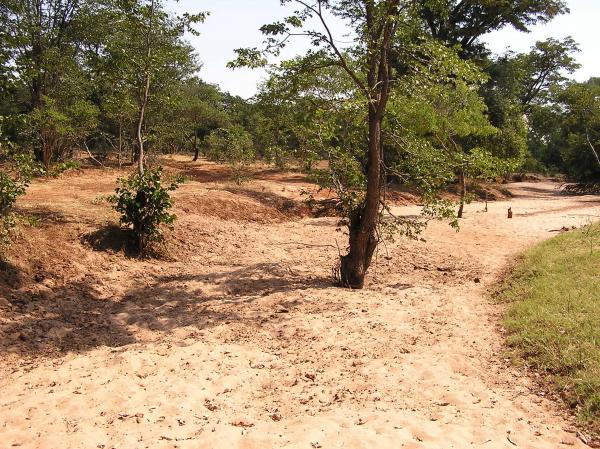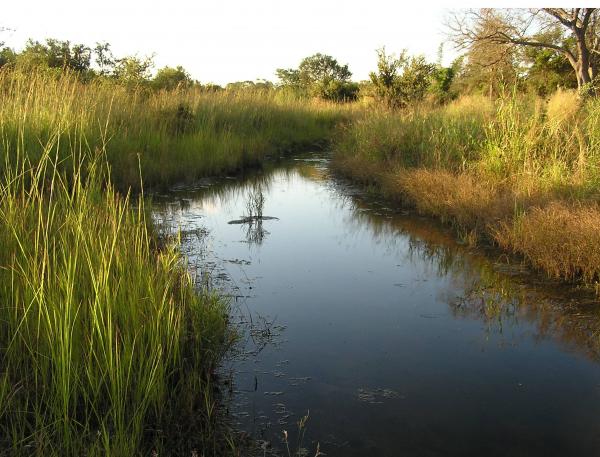A Modest Proposal - Expanding Our Ecological Footprint (Ann Adams)
 There has been a great deal of press about the need for humans to reduce our ecological footprint, implying that Nature would be better off without humans. But, what if humans were actually a necessary part of addressing the key environmental issues of our time?
There has been a great deal of press about the need for humans to reduce our ecological footprint, implying that Nature would be better off without humans. But, what if humans were actually a necessary part of addressing the key environmental issues of our time?
Holistic Management International (HMI), an international environmental education non-governmental organization headquartered in Albuquerque, New Mexico, works with stewards of large landscapes (agricultural producers, pastoralists and government agencies) to help them partner with Nature to create a positive ecological footprint. Through improved natural resource management practices, these managers improve soil health, which results in a host of benefits including improved water quality, carbon sequestration, drought mitigation, flood resilience, and food security.
The key to this work is understanding how Nature functions in “brittle” and “non-brittle” environments. Humans have taken a one size fits all approach to our resource management practices, which has resulted in loss of biodiversity and desertification. We have assumed that if we just leave Nature alone it will heal itself. While that may be true in non-brittle areas where there is consistent humidity year round that supports biological decay, it is not true in brittle areas where resting the land by reducing grazing pressure leads to greater land degradation. Considering that two thirds of the world is brittle, we had better make sure we look at our assumptions.
Brittle areas need the presence of herbivores to cycle the plants through their guts to provide that biological decomposition. If those herbivores are not present, grasses stagnate and soils cap, resulting in poor mineral cycle, water cycle, energy flow, and community dynamics - the ecosystem processes.
These concepts were first articulated by Allan Savory, founder of HMI, as a young park ranger in Rhodesia (now Zimbabwe) 50 years ago. He saw the land continuing to deteriorate even as wildlife was culled to reduce the grazing and browsing pressure from the land. From his observations, he developed the key insights that underpin Holistic Management. In 1984, The Center for Holistic Resource Management (now HMI) was founded. Since then thousands of land managers all over the world have used these principles and practices to positively affect over 30 million acres worldwide.
One of the key insights of Holistic Management is Nature functions in wholes, therefore we must manage the relationships within that whole for the benefit of all. With Holistic Management we accomplish this by determining the whole we are managing and working with all the resources in it through a decision-making framework that encourages that whole to act as a self-organizing system - humans adapting their management in response to the changes happening in their resource base.
Humans often struggle to engage with Nature’s complexity. Our tendency toward problem solving leads us to base our objectives on addressing a problem rather than focusing on desired outcomes. With Holistic Management, we strive to determine what we want in the context of our quality of life and our desire for healthy functioning ecosystem processes and test our decisions toward that desired outcome. Those are our management filters - providing a consciousness that replicates the evolutionary process.
Healthy ecosystem processes also create a resilient landscape that can weather the vagaries of life including droughts, floods, market shifts and government policies. In turn, those who rely on that land base are better situated to survive those fluctuations as well. This resilience buys time for those relying on the landscape to adapt and adjust to changes, staying responsive to early indicators and balancing feedback loops, as they continue to work toward that desired outcome.
One example of how this management process works is at our learning site, The Africa Centre for Holistic Management, in Zimbabwe. There we have worked with the local villagers to help them articulate their desired quality of life and a description of the land base upon which they rely. We then have worked with them to create management systems that help them create a positive ecological footprint within that landscape.
 As you can see from these two pictures, while neighboring lands remain desertified and riverbeds dry (even in wet years), the land at our learning site is moving in the direction of healing ecosystem processes with more plants covering once bare ground and an increase in plant species diversity. Likewise, riverbeds (photo below)
As you can see from these two pictures, while neighboring lands remain desertified and riverbeds dry (even in wet years), the land at our learning site is moving in the direction of healing ecosystem processes with more plants covering once bare ground and an increase in plant species diversity. Likewise, riverbeds (photo below)  that have remained dry for years are now running again. All this effort has resulted in improved wildlife habitat that will result in additional tourist income for that area. Likewise, villagers can now provide more food security for their families as they have forage for their livestock. In turn, that livestock is also used to increase soil fertility in both rangelands and crop areas, increasing crop yields. Similar results are being achieved here in the U.S. when ranchers manage their domestic herds to mimic the behavior of wild herbivores like the Bison that kept the grasslands healthy before humans removed the predators and the herbivores from this system.
that have remained dry for years are now running again. All this effort has resulted in improved wildlife habitat that will result in additional tourist income for that area. Likewise, villagers can now provide more food security for their families as they have forage for their livestock. In turn, that livestock is also used to increase soil fertility in both rangelands and crop areas, increasing crop yields. Similar results are being achieved here in the U.S. when ranchers manage their domestic herds to mimic the behavior of wild herbivores like the Bison that kept the grasslands healthy before humans removed the predators and the herbivores from this system.
These are just two examples of how Holistic Management has been used by a community to create a symbiotic relationship with other aspects within their whole, resulting in improved quality of life for many species and a better economy for the humans involved so they can continue to create a positive ecological footprint.
Research performed by scientists from Montana State University, Ohio State University, and North Dakota State University have verified some of the changes on grazing land where Holistic Management is practiced such as:
- 300% increase in plant species
- 400% increase in stocking rate
- 50% decrease in bare ground
- 800% increase in soil permeability
- 300% increase in profitability
- 500% increase in riparian bird population
- 900% increase in rooting depth of plants
Humans have certainly contributed to environmental problems, but abdicating our responsibility will only exacerbate the problems on over two thirds of the Earth’s surface which are brittle environments needing many herbivores to cycle the grasses and create biologically active soil. We encourage resource managers, policy makers, and citizens from every walk of life to recognize our necessary role as part of the self-organizing systems within our communities and within the planet and universe.
Image Credits:
- Gear and tools: © Fribourg - Fotolia.com
- Desertified Lands: Holistic Management International
- Regenerated Riverbed: Holistic Management International

anna [at] holisticmanagement [dot] org (Ann Adams) is Director of Educational Products & Outreach
at Holistic Management International.
